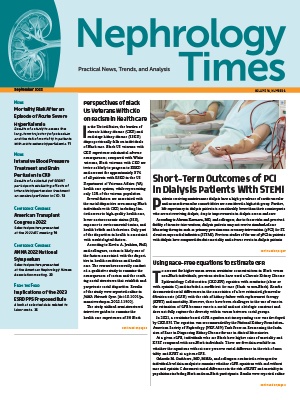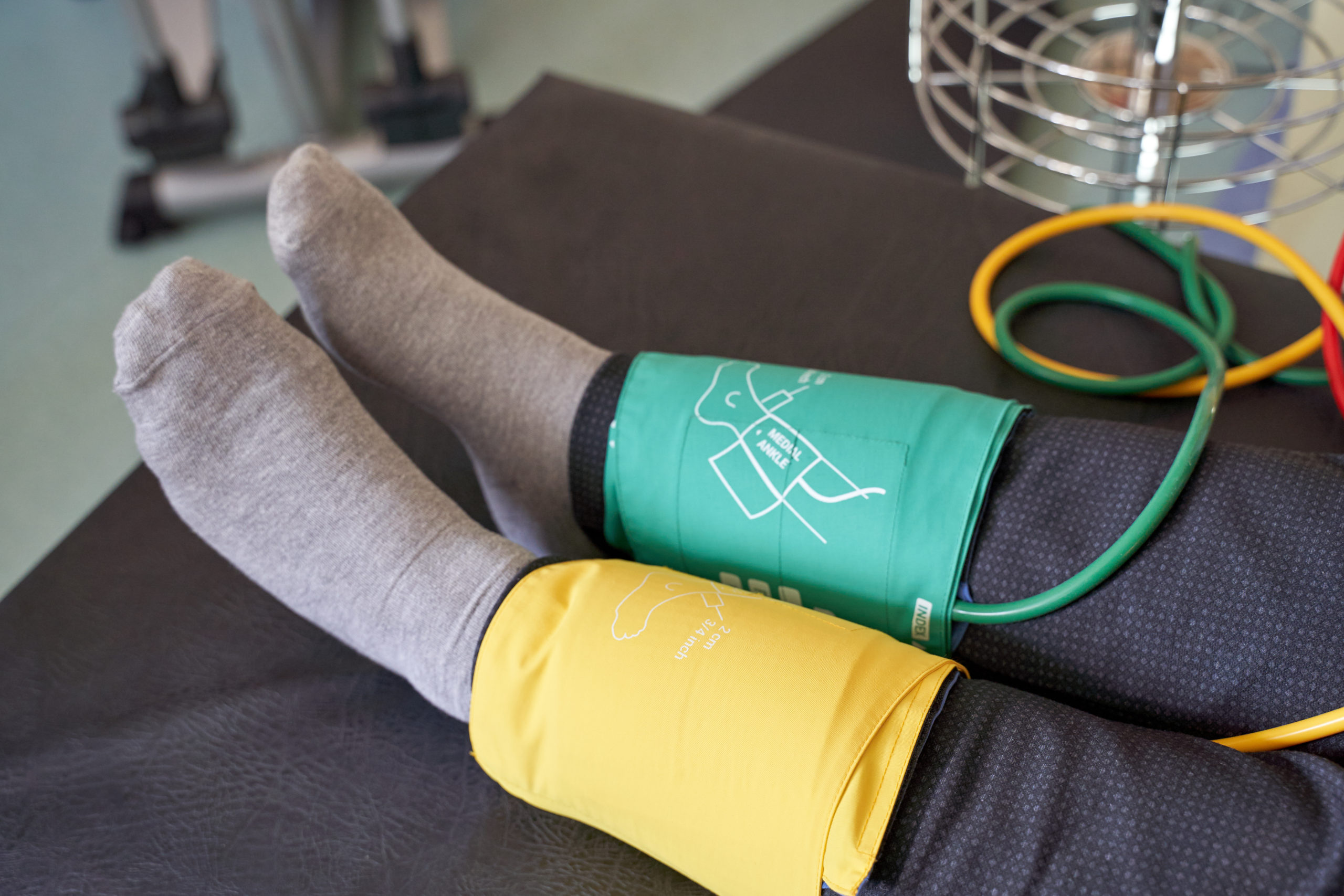
There are national and international guidelines to identify patients who may benefit from referral to nephrology care to delay progression of chronic kidney disease (CKD), manage complications associated with CKD, and prepare for kidney failure. Timely referral to nephrology care depends on recognition of CKD, facilitated by automated reporting of estimated glomerular filtration rate (eGFR) by laboratories.
Guidelines from Kidney Disease Improving Global Outcomes and other organizations include level of eGFR as well as additional indications for referral that can be identified through laboratory testing (eg, albuminuria level and rapid disease progression). However, according to Vishal Duggal, MD, and colleagues, despite the availability of guidelines to facilitate recognition of CKD, there has been little progress in reducing the burden of CKD or improving preparation among patients who progress to kidney failure.
The researchers conducted a retrospective observational cohort study to examine whether patterns of nephrology referral reflect current clinical practice guidelines and to estimate the change in referral volume if referrals were based on the estimated risk of kidney failure. Results were reported in the American Journal of Kidney Diseases [2022;79(3):347-353].
The study cohort included 399,644 veterans being cared for in the US Veterans Health Administration of the Department of Veterans Affairs (VA) with CKD from October 1, 2015, through September 30, 2016. The study exposure was laboratory referral based on VA/Department of Defense guidelines, categories of predicted risk of kidney failure using the Kidney Failure Rusk Equation, and the combination of laboratory referral criteria and predicted risk. The primary outcome of interest was the number of patients identified for referral to nephrology care.
The researchers evaluated the number of patients who were referred to nephrology care and their predicted 2-year risk for kidney failure. For each exposure, they estimated the number of patients who would be identified for referral. Referral was defined as either the placement of a consultation order or a completed visit with a nephrologist between October 1, 2015, and September 30, 2016. Kidney failure was defined as the initiation of maintenance dialysis or receipt of kidney transplantation; data on kidney failure were obtained with a linkage to the US Renal Data System. Patients were followed for 2 years following the index date.
Among patients who met each referral indication, the number of patients who were referred, the predicted 2-year risk for kidney failure, and the frequency of progression to kidney failure over 2 years were evaluated. Among all patients with CKD who had not received nephrology care in the prior year, the study estimated the maximum referral volume that would be generated it VA providers referred all patients in each of three scenarios: (1) patients who met laboratory-based indications for nephrology referral; (2) patients who met a specified kidney failure risk threshold in addition to laboratory-based indications; and (3) patients who met a specified kidney failure risk threshold alone. Two-year kidney failure risk thresholds of 1%, 2%, 3%, 5%, and 10% were evaluated.
Of the 399,644 patients under VA primary care with CKD, 37,560 had visited a nephrologist in the previous year, and 362,084 had not. Of those who had not visited a nephrologist in the previous year, 18.3% (n=66,276) met an indication for referral, and 17.7% (n=11,752) of those were referred to nephrology care in the following year. A total of 295,808 patients did not meet a referral indication, and 10,015 (3.4%) were referred. The median 2-year predicted risk for kidney failure was 1.5%.
The majority of patients meeting an indication for referral did so based on the criterion of eGFR <30 mL/min/1.73 m2. Patients who were referred were more likely to meet multiple potential indications for referral, particularly eGFR <30 mL/min/1.73 m2 and heavy proteinuria. The highest predicted risk of kidney failure at 2 years was seen in patients who met the indication of heavy proteinuria with diabetes indication or the eGFR <30 mL/min/1.73 m2 indication. The lowest predicted 2-year risk for kidney failure was associated with the rapid eGFR decline indication.
When using a more stringent definition for rapid decline in eGFR, 50,690 patients met an indication for referral, including 30.9% who met the rapid eGFR decline indication. The median predicted risk of kidney failure was 0.6% in those meeting an indication for referral using the stringent definition of rapid eGFR decline. The rapid eGFR decline indication had the lowest predicted risk of kidney failure, similar to the primary analysis.
Using both laboratory-based indication and the risk of kidney failure, among patients with computable kidney failure risk, approximately 57.7% had a value exceeding 1%. If referrals were restricted to patients with a predicted risk of ≥1% in addition to laboratory indications, the potential referral volume would be reduced from 66,276 to 38,229 patients.
Using the risk of kidney failure alone, we estimated that 72,948 patients would meet a 1% 2-year risk threshold, comparable to the number of patients meeting laboratory-based indications. Among all patients meeting the 1% 2-year risk threshold, the median 2-year predicted risk was 2.3%. If the threshold for referral were increase to 2%, an estimated 41,101 patients would be identified.
The researchers cited strengths and limitations to the study findings. Strengths included use of a national, integrated health care system that serves a large population of patients with CKD, and the use of a validated risk prediction tool. While the study did not account for all care outside of the VA, sensitivity analyses limited to patients eligible for Medicare suggested similar results. Limitations included the inability to determine the reasons for nephrology referral, or the extent to which increased referral volumes would affect wait times or clinical outcomes. Missing measurements of proteinuria were also cited as limitations. Finally, the analyses may not be generalizable to other health care systems.
In conclusion, the researchers said, “A significant proportion of patients identified by laboratory-based indications for nephrology referral have a predicted risk of kidney failure less than 1%. A referral system based on a 2-year kidney failure risk exceeding 1% would identify a similar number of patients while targeting those with higher risk for kidney failure. These findings may inform clinical decision support development to target nephrology referrals to patients most likely to benefit.”
Takeaway Points
- Results of a retrospective, observational cohort study to assess whether patterns of referral to nephrology care based on laboratory values reflect current clinical practice guidelines, and to estimate change in referral volume if referrals were based on the estimated risk of kidney failure.
- The study cohort included 399,644 veterans with chronic kidney disease treated in the Veterans Health Administration of the Department of Veterans Affairs between October 1, 2015, and September 30, 2016.
- Current laboratory-based guidelines for nephrology referral identify patients at low risk for progression of CKD; referral based on a 2-year kidney failure risk exceeding 1% would identify a similar number of patients but with a higher median risk of kidney failure.







 © 2025 Mashup Media, LLC, a Formedics Property. All Rights Reserved.
© 2025 Mashup Media, LLC, a Formedics Property. All Rights Reserved.